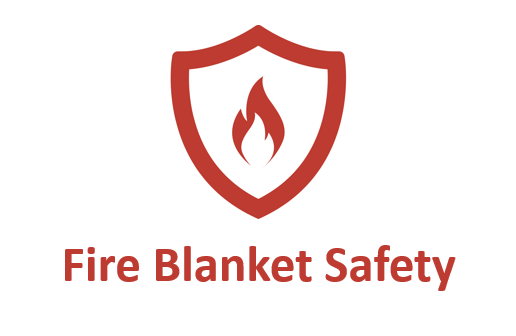
In the realm of fire safety, where split-second decisions can mean the difference between catastrophe and containment, the significance of selecting the right equipment cannot be overstated. Among the array of tools available for fire suppression, fire blankets stand out as versatile, effective, and often overlooked assets in safeguarding lives and property.
Understanding the power inherent in choosing the appropriate fire blanket is essential for ensuring optimal protection in the face of unforeseen emergencies.
Comprehensive Overview: Understanding the Dynamics of Fire Blankets
Fire blankets are specialized safety devices designed to extinguish small fires or to provide protection to individuals in case of a fire emergency. They are made from fire-resistant materials and are available in various sizes and configurations to suit different needs. The primary purpose of a fire blanket is to smother flames by cutting off the oxygen supply, thereby preventing the fire from spreading and allowing individuals to escape safely.
Fire blankets are constructed from a variety of materials that possess high heat resistance and flame-retardant properties. Common materials used in the production of fire blankets include:
- Fiberglass: Fire blankets made from fiberglass offer excellent heat resistance and are capable of withstanding high temperatures without melting or burning. They are lightweight, flexible, and durable, making them suitable for various fire suppression applications.
- Wool: Wool fire blankets are known for their exceptional ability to smother flames effectively. Wool fibers are naturally flame-resistant and can withstand intense heat, making wool blankets ideal for extinguishing small fires involving flammable liquids or grease.
- Kevlar: Fire blankets made from Kevlar are renowned for their strength and durability. Kevlar fibers are highly resistant to heat and can protect against radiant heat and direct flame exposure. Kevlar blankets are commonly used in industrial settings where heavy-duty fire protection is required.
Fire blankets come in various sizes to accommodate fire suppression needs and environments. Common size variations include:
- Regular: Regular fire blankets are typically designed for personal use and are compact enough to be stored in kitchens, vehicles, or other confined spaces. They are suitable for extinguishing small fires on clothing, appliances, or work surfaces.
- Large: Large-sized fire blankets are ideal for covering larger areas or for protecting multiple individuals in case of a fire emergency. They are commonly found in commercial buildings, laboratories, and workshops.
- Extra-Large: Extra-Large fire blankets are designed for industrial applications or extinguishing fires involving larger objects or equipment. They provide extensive coverage and can be deployed quickly to prevent fires from spreading.
Fire blankets can be deployed using various application methods depending on the type of fire and the surrounding environment. Common application methods include:
- Direct Placement: Fire blankets can be placed directly over the flames or the source of the fire to smother and extinguish it. This method is suitable for small fires on surfaces or objects.
- Wrap and Cover: In situations where individuals need protection from flames or heat, fire blankets can be wrapped around the body or used as a shield to provide temporary insulation and safety.
- Roll and Toss: Fire blankets can be rolled up and tossed onto a fire to quickly suppress flames and prevent them from spreading. This method is often used in emergency situations where immediate action is required to contain the fire.
Understanding the different types of fire blankets and their unique features is essential for selecting the most appropriate option for specific fire safety needs and scenarios. Read fire blanket reviews.
Critical Considerations in Selecting Fire Blankets
A. Material Durability
Fire blankets are exposed to high temperatures and flames during use, so they must be constructed from robust and heat-resistant materials that can withstand these harsh conditions.
Fiberglass & wool are common materials used in fire blankets due to their exceptional heat resistance and durability. It's essential to choose a fire blanket made from high-quality materials that will not degrade or deteriorate over time, ensuring long-term reliability and effectiveness in fire suppression.
B. Size and Coverage Area
Fire blankets are available in various sizes to accommodate fire suppression needs and environments. The size of the fire blanket should be appropriate for the intended application and the size of the potential fire hazard.
Whether it’s a regular fire blanket or a larger fire blanket, selecting the right size ensures adequate coverage and maximizes the blanket's effectiveness in suppressing fires.
C. Ease of Use and Deployment
The fire blanket should be user-friendly and intuitive to deploy, allowing individuals to respond swiftly to fires without hesitation.
Look for features such as clear instructions for use, easy-to-grasp handles or tabs for quick deployment, and lightweight construction for effortless handling.
Training on proper fire blanket deployment is also essential to ensure that individuals can effectively use the blanket in the event of a fire emergency.
D. Compatibility with Various Types of Fires
Different types of fires require different approaches to suppression, so it's essential to choose a fire blanket that is compatible with various types of fires.
Consider the types of fires commonly encountered in your environment, such as Class A (ordinary combustibles), Class B (flammable liquids), or Class K (cooking oils and fats).
Versatility in fire blanket design ensures that it can effectively suppress a wide range of fire hazards, enhancing overall fire safety and protection.
By carefully considering these factors when choosing a fire blanket, select the most suitable option to meet their specific fire safety needs and requirements.
Expert Tips for Optimal Fire Blanket Usage
- Establish a routine maintenance schedule to inspect your fire blankets for signs of damage, wear, or contamination.
- Check for tears, holes, or fraying edges that could compromise the blanket's integrity.
- Inspect the packaging and storage conditions to ensure that the fire blankets remain clean, dry, and free from any contaminants that could affect their performance.
- Regular maintenance and inspection help identify issues early and ensure that your fire blankets are always ready for use in case of an emergency.
- Store fire blankets in designated locations that are easily accessible and marked for quick identification during an emergency.
- Avoid storing fire blankets in areas prone to high temperatures, moisture, or direct sunlight, as these conditions can degrade the materials and reduce their effectiveness.
- Ensure that fire blankets are stored away from sources of potential ignition and are kept in their original packaging to protect them from damage and contamination.
By following these tips for using fire blankets, individuals and organizations can enhance their fire safety preparedness and ensure the effectiveness of their fire suppression measures.
Discover Unparalleled Safety with the Fire Blanket Safety
So, you're on the hunt for the perfect fire blanket, huh? Look no further than the Fire Blanket Safety. This bad boy isn't just any ordinary blanket; it's the top dog in the world of fire safety.
With its durable construction and top-notch materials, the US No. 1 Fire Blanket is built to handle whatever flames throw its way. Whether it's a small kitchen fire or a larger industrial blaze, this blanket has got you covered.
Plus, it's certified to meet all the highest fire safety standards, so you can trust it to get the job done right. When it comes to protecting yourself and your loved ones from the dangers of fire, why settle for anything less than the best? Choose the Fire Blankets Safety, and rest easy knowing you're in good hands.
Final Verdict
Selecting the right fire blanket is of utmost importance for effective fire safety. From ensuring compliance with standards to considering durability and compatibility, the choice of fire blanket can significantly impact the outcome of a fire emergency.
Prevention remains key, but having the right tools, like a quality fire blanket, can make all the difference in an emergency. So, have you evaluated your fire safety measures lately?
Frequently Asked Questions about the Power of Choosing the Right Fire Blanket
1. How do I choose a fire blanket?
Consider factors like fire safety standards compliance, material durability, size, ease of deployment, and compatibility with different types of fires when selecting a fire blanket.
2. Why is a fire blanket important?
A fire blanket is crucial for smothering small fires, protecting individuals, and preventing the spread of flames, providing a quick and effective response to fire emergencies.
3. What's one of the most important things to do when using a fire blanket?
Proper training on fire blanket deployment is essential to ensure effective and safe use during emergencies.




